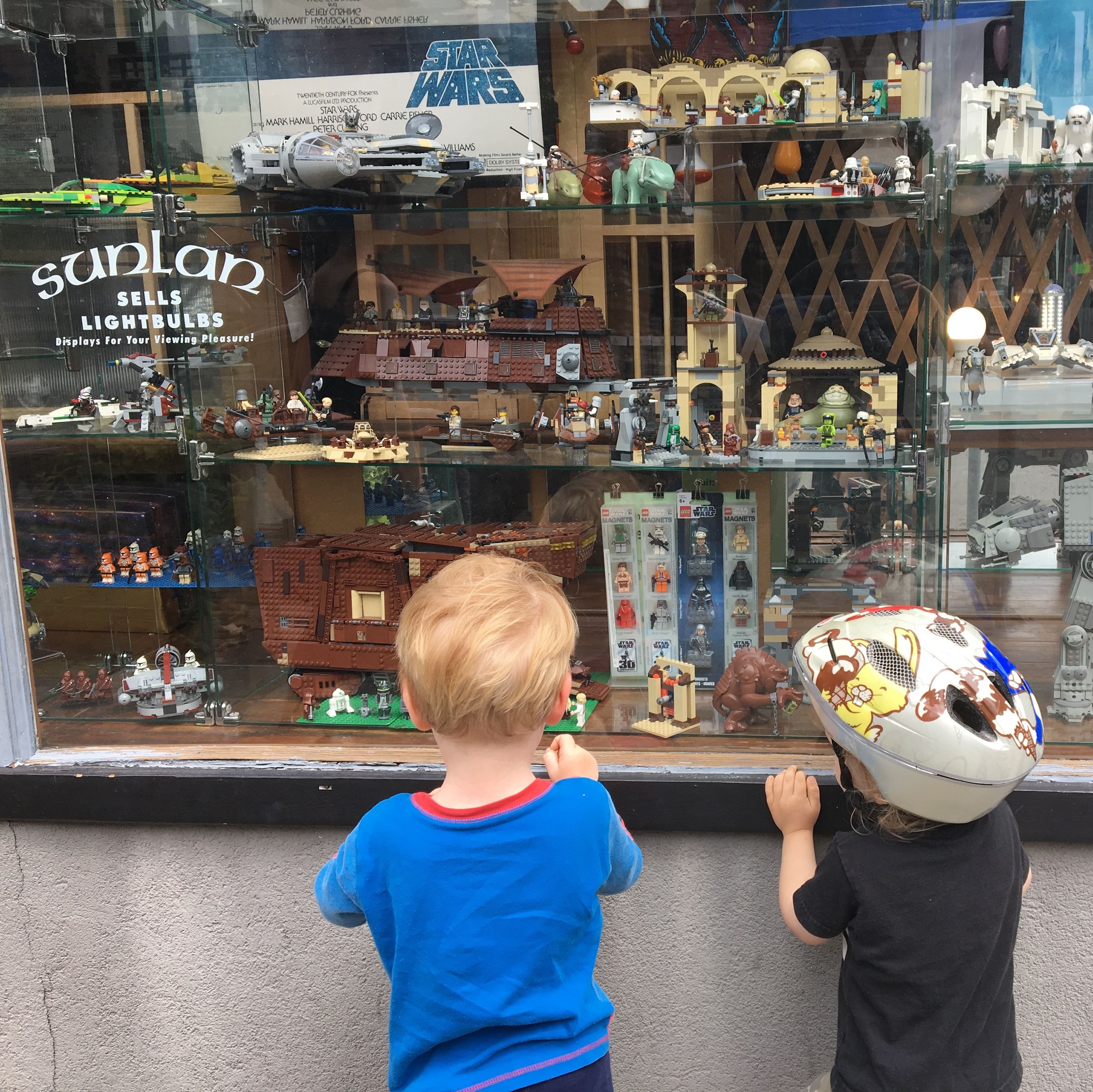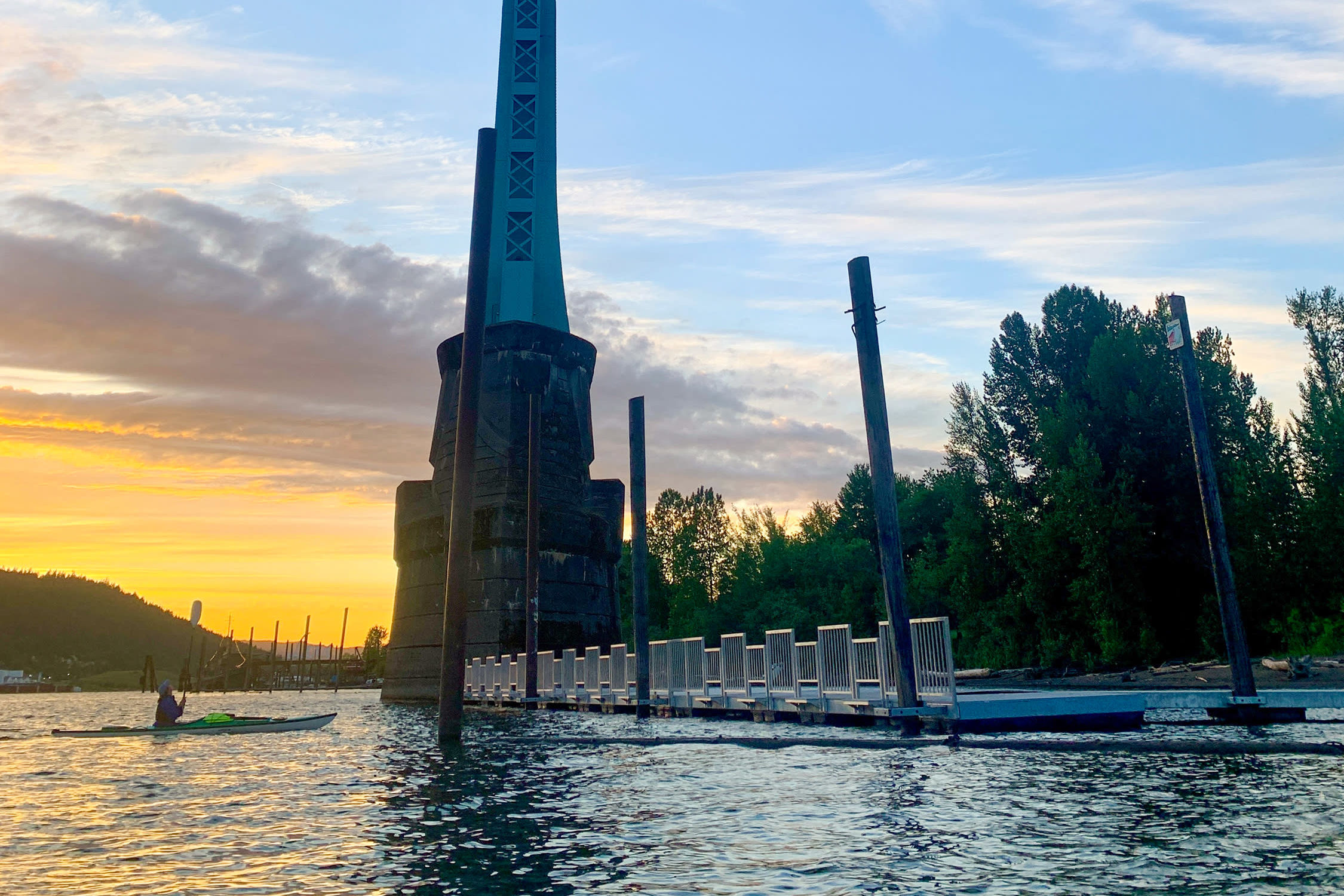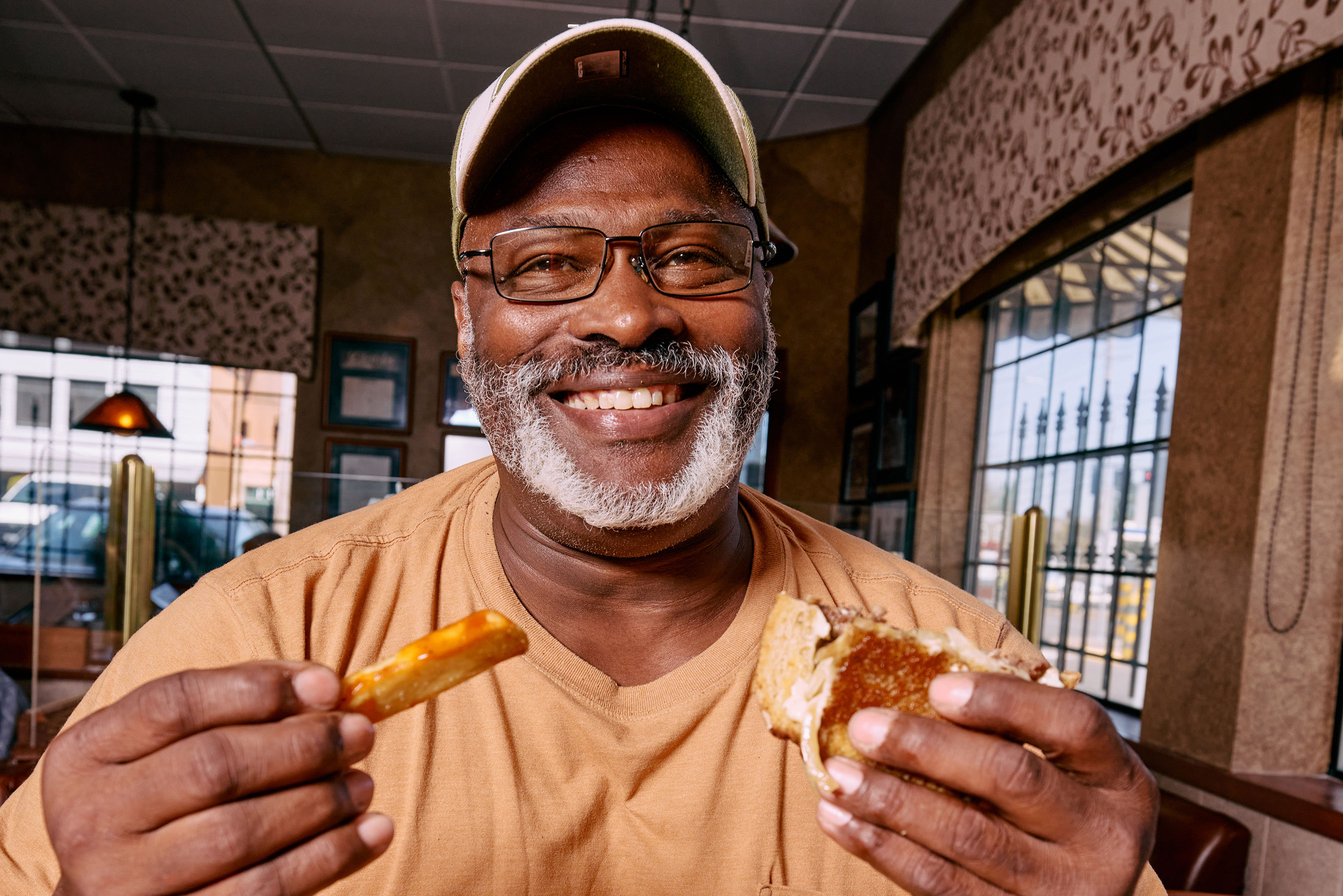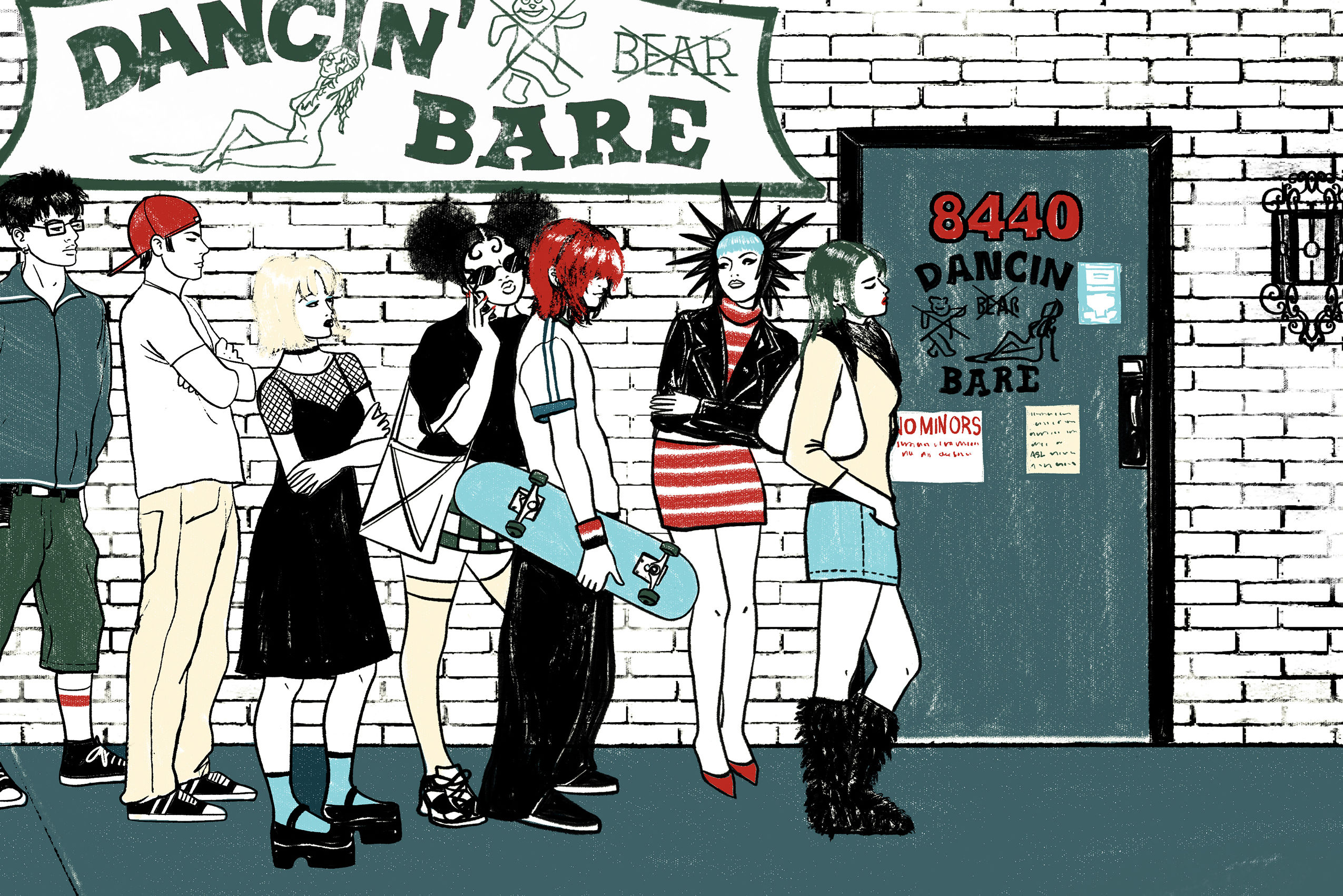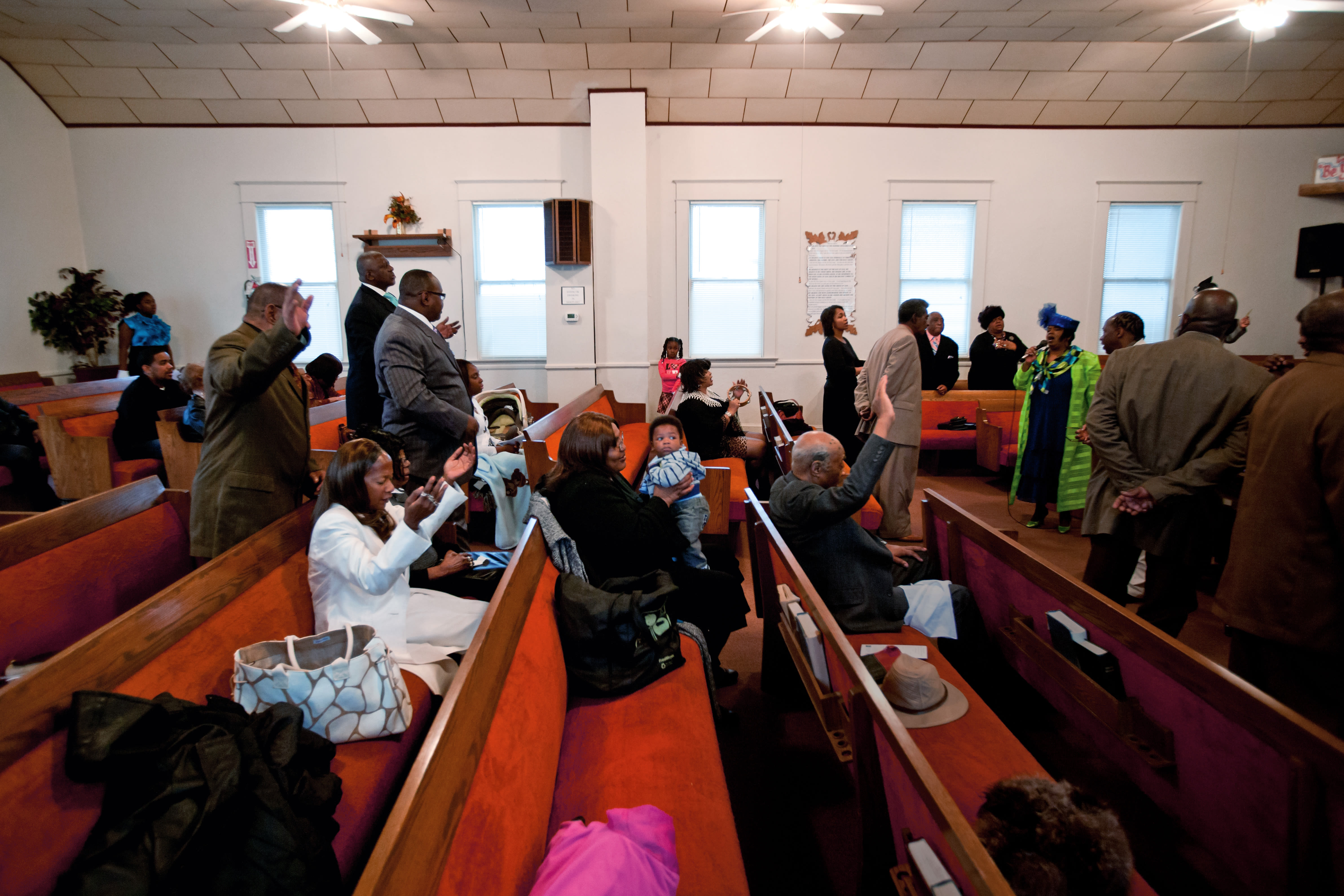
From the Archives: By the Grace of God
IT’S 7:35 A.M. ON A FALL SUNDAY, and the coffee shops on NE Alberta Street are just beginning to stir. But a block south, Johnny Bradford is already behind schedule. Dresse†d in a black suit, he climbs into a powder blue van in front of Emmanuel Church of God in Christ United, just around the corner from the Alberta Rose Theatre, when his cell phone rings.
“I’m running late,” he answers. “The devil hid my keys this morning.”
He’s going to do that because you’re doing the Lord’s work,” replies a woman’s voice, before giving directions to her house.
Every Sunday morning, the Lord’s work for Bradford involves driving to the farthest reaches of Portland to pick up congregants who lack the means to get to the small, century-old building, with its rectangular steeple and fresh coat of cream paint, whether because of age, disability, or finances. He is part of a small fleet of van drivers dispatched from inner North and Northeast’s predominantly African American churches to round up their scattered flocks.
Bradford heads out past the lingerie shops on NE 82nd Avenue to Halsey Street for his first pickup—three kids. Then it’s past apartment buildings with generic names to SE 164th and Powell. “Used to be that nobody lived past 42nd,” he says as he turns and heads for Beaverton, 20 miles to the west on the other side of the metro area. “Now everybody stays out here because rent is cheap. But we’ll get God’s children wherever they’re at.”
The odometer rolls with the road beneath him. Off of Beaverton-Hillsdale Highway, he picks up Mary Grace, sporting a brown cape, immaculately coiffed hair, and the tubes of an oxygen tank. Everyone calls her Mother Grace.
Four stops, one and a half hours, and 50 miles later, Bradford drives back up Alberta. The street now bustles with people walking their dogs and babies, joggers in fancy spandex, and a line of biblical proportions gathered outside brunch institution the Tin Shed.
“I miss it here,” says Mother Grace quietly. When she first came to Portland from California in 1980, she settled on NE Dekum Street. But she moved to Beaverton 15 years ago in search of cheaper rent and to escape the pervasive influence of crime and drugs. “People won’t come visit me ’cuz I’m too far out. I don’t know many people anymore. So I go back for church, because everyone knows your name.”
Inside the unadorned, one-room church, the band jams, the spirit flows, and some 35 people, in pastel three-piece suits or heels and hats, sing, clap, and pray, as some of them have done since the church’s founding in the mid-1970s. There is no separation of choir and congregation: the whole house is song. Bishop William Marcus Pollard’s teal suit pops against the brown carpet and the altar pews’ worn cushions. He riffs between verses, finding blessings even in his flock’s distant homes: “You walk up to St. Peter and you say, ‘I’ve got a house on mansion lane.’ And St. Peter says, ‘Oh no, you got a two-bedroom out on 78th Street.’ But you don’t live in your car, so praise Him!” And grandmothers and granddaughters alike shake their tambourines.
When it’s over, people linger before most get into their cars or the van for the long drives back to Beaverton and Wood Village and Vancouver. It didn’t used to be this way. From the 1900s until the 1990s, the majority of Portland’s African American population lived in a small cluster of North and Northeast neighborhoods, many once part of the separate 19th-century town of Albina. In this tight-knit urban pocket, businesses, restaurants, schools, social clubs, and churches thrived by serving one of the nation’s smallest urban black communities. Although it had its troubles through the years, Albina was nonetheless a vibrant community with a cohesive identity. But no more.
Over the past two decades, the gentrification of inner North and Northeast has displaced much of this community. Urban renewal policies and a broader trend in favor of inner-urban living brought a sea change for new residents—most white and Hispanic—into Portland’s historically black neighborhoods. An influx of trendy businesses, like those Alberta Street coffee shops, and upscale development followed. But as the neighborhood rose, much of its longtime population moved away, pushed into Portland’s hinterlands.
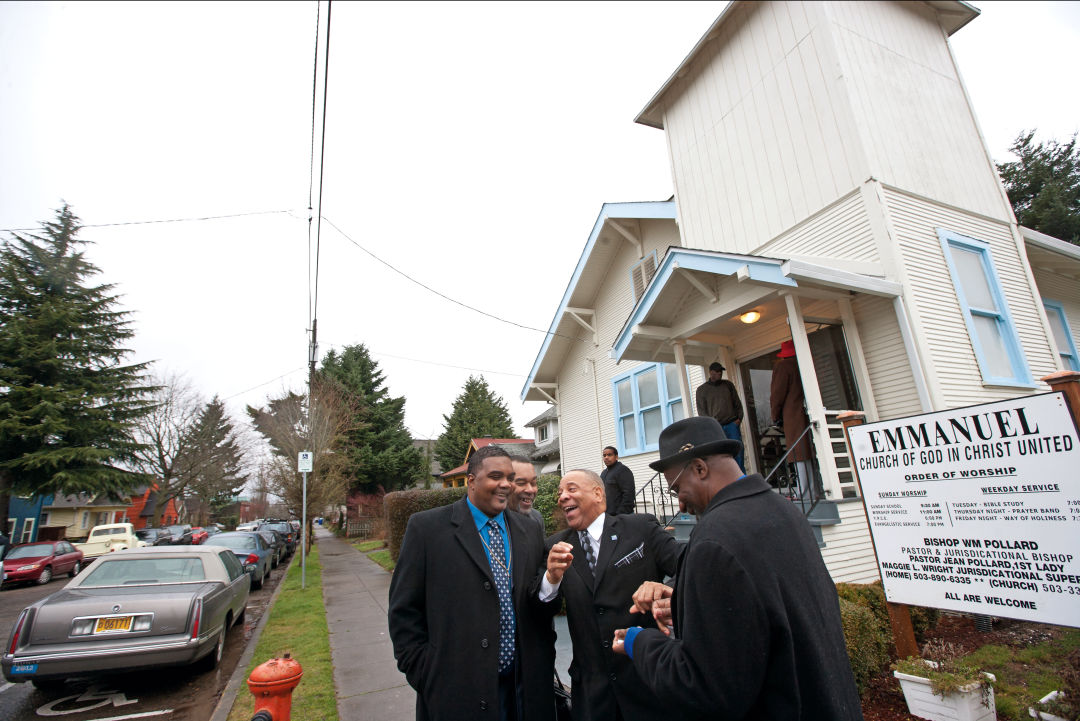
Johnny Bradford (middle) jokes with members of Emmanuel Church of God in Christ United before driving congregants home to Gresham and Beaverton in the church van.
Image: Darryl James
The 2010 census revealed that 7,700 African Americans moved out of inner North and Northeast Portland in the preceding decade. While a considerable black population remains in the area—some sections, like the Boise, Humboldt, and King neighborhoods, remain as much as 25 percent African American—it is rapidly fragmenting.
“You’re talking about people who were blocks from each other, and now they’re cities apart,” says Ronnie Wright, a member of Emmanuel’s choir. He grew up nearby but moved to Vancouver because he couldn’t afford a home in the area big enough for his family. “You don’t borrow a cup of sugar or check in and see if little Johnny’s OK. Primarily, the only time we see each other is church.”
In America’s cities, racial and ethnic enclaves come and go. New York’s Little Italy has been virtually swallowed by Chinatown, which itself is shifting white; Chicago’s “bungalow belt,” once the segregated heartland of that city’s white working class, is rapidly turning Hispanic. In one sense, then, the movement of blacks from North and Northeast Portland to the city’s fringes is merely the latest chapter in a 130-year history of forced dislocations of the African American community. Yet with no other black neighborhood to move to, the ramifications are greater, especially when it coincides with a troubling development: Portland’s African Americans now rank at or near the bottom of almost every socioeconomic measure, below Native Americans, Hispanics, Asians, and Caucasians.
Stunningly, black Portlanders are actually worse off today by many counts than before the civil rights movement. Homeownership has dropped. The college education rate has barely budged, especially in comparison to its growth among whites. And per capita income has basically stagnated at $15,000 since 1979, while it climbed for whites from $25,000 to $33,000. Only two years ago, Oregon’s 12 percent unemployment rate sparked comparisons to the Great Depression, notes Karen Gibson, associate professor of urban studies and planning at Portland State University, who calculated these figures from census data from 2009. That’s nothing new for Portland’s black population: their unemployment rate rose from 12 percent in 1970 to 18 percent today. “The black community here has been in a depression state for over 40 years,” she says.
In the face of this social disaster, the neighborhood’s welter of black churches, mostly independent charismatic congregations steeped in the rich history of African American worship, persevere, although in service of widely scattered flocks. “Church keeps me tied to the community and keeps my spirits up,” says 46-year-old Portland native Melba Annoh, who for years rode to Emmanuel from her home in Vancouver. (She only recently switched to a nearby congregation.) “If it weren’t for the church, I’d just be alone.” Before the transformation of Albina into a thriving, albeit segregated, black neighborhood post–World War II, the churches served as the sole place where Portland’s small black community could gather and express itself. We’ve progressed through 65 years and a civil rights movement since then, yet once again the Rose City’s black population clings to a sense of community only by the grace of their houses of God.
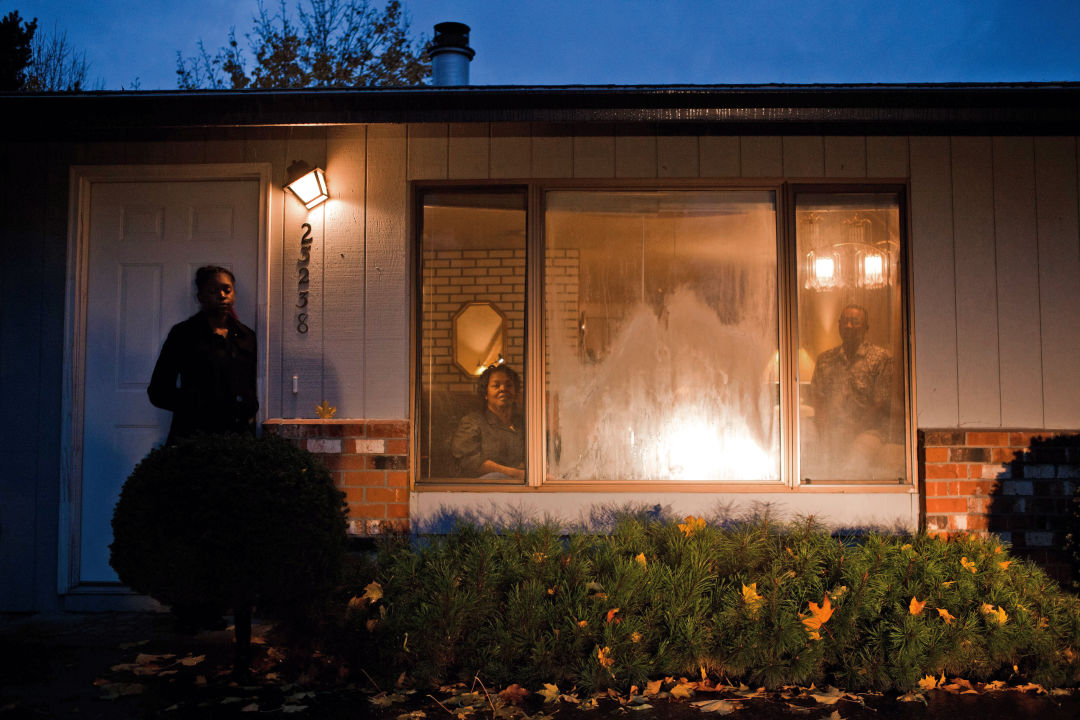
Rita Ishmael (middle) and her family relocated to Wood Village for cheaper rent. “I moved thinking I was coming to a better world,” she says, “but I came to the same thing and worse.”
Image: Christopher Lamarca
RITA ISHMAEL GREW UP IN AN APARTMENT WHERE now sits Memorial Coliseum’s side entrance. After their building was torn down in the late 1950s for the coliseum in one of Portland’s earliest waves of urban renewal, her family moved often, she says, because they were poor. She finally left Northeast in 2001, after several years in an apartment full of mildew, mice, and roaches that was broken into several times—where rent went up but nothing got fixed. She now lives in a single-story apartment complex in Wood Village, out past NE 232nd Avenue, with her husband and granddaughter. The carpet’s wrinkled, the heater’s broken, and dents in the door recall an aborted break-in attempt. Every Sunday, when it’s not too cold, she drives to Emmanuel Church. She’s long sung in the choir, but at age 64 her health now prevents it—though she hopes to get back to it sometime. When her car’s broken, she makes a two-bus, one-hour-plus commute.
Ishmael doesn’t know her predominantly Hispanic neighbors. No one comes to visit.
“I moved thinking I was coming to a better world,” she says, “but I came to the same thing and worse.”
While some of Portland’s African American population has scattered to Vancouver, Beaverton, St. Johns, and Hillsboro, most who have moved went east of 82nd Avenue, to the region colloquially known as “The Numbers.” The black population in East Portland alone grew 151 percent between 1990 and 2010, and the number of subsidized renters more than doubled in some areas, since rents are cheapest out east. “Places where we could never live—Gresham, East Portland—where no one would rent to us, now we call that ‘the new ghetto,’” says Roberta Tyler, who traverses the region every Sunday behind the wheel of the Highland Christian Center’s van.
Despite this mass migration eastward, virtually none of the African American community’s infrastructure followed it. Businesses that still cater specifically to blacks largely remain in Albina, meaning people must commute back to get their hair done, to visit restaurants that serve the food they grew up with, even to find nylons that match their skin tone. Culturally specific social and medical services haven’t followed, either. The commutes often come at a great cost for isolated, low-income people, if they can make them at all.
“I’m diabetic, I have to get to Emanuel Hospital regularly, but I don’t drive,” says Carolyn Anderson, who lives in a small duplex near SE 82nd Avenue and Holgate Boulevard. “TriMet cut bus times, which affects how I get to doctor appointments. I’m alone. If something happens to me, I don’t want to think what would happen.”
Black students find themselves a small minority in East Portland schools, where teachers and administrators can lack cultural competency skills, and where black history and black role models often go missing. One of Ishmael’s fellow choir members, Annoh, tells the story of how a school principal in East Vancouver called her in several years ago because her sons had afros. “‘When I see the way they look, I think gang members,’” Annoh recalls the principal telling her. “I said, ‘Oh, no, they’re not gang members, but I can get you some if you want to see the difference. The problem is you don’t know the difference between being ethnic and being a gang member.’”
The ramifications are real: in 2010, only 47.5 percent of African American students graduated high school in Multnomah County—the number was as low as 38.5 percent for the Gresham Barlow District—and black students were more than twice as likely to be expelled or drop out as their white peers. Dismal graduation rates don’t mean that black kids are uneducatable, says Ann Curry-Stevens, the researcher behind the report “Communities of Color in Multnomah County: An Unsettling Profile.” “It means that the context in which they’re educated matters.”
Portland’s history of poor dealings with its African American population has deep roots and seemingly perennial blooms. In 1859, Oregon became the first state to enter the union with an exclusion law barring African Americans from residing, working, and voting in the state. In the 1950s and ’60s, Portland’s earliest urban renewal projects bulldozed hundreds of houses, along with lower Albina’s teeming black business core, for Memorial Coliseum and Emanuel Hospital. Even as late as 1990, the Oregonian exposed a form of “redlining” by banks and lenders who purposely denied African Americans loans to buy homes in North and Northeast Portland.
Yet that history goes largely unmentioned in the many national magazines and urban planning seminars lauding Portland as one the nation’s most desirable and politically progressive places to live, with the new Albina’s lively mix of indie culture and aspiring middle class often central to the city’s image. Three decades of liberal leadership under mayors Bud Clark, Vera Katz, Tom Potter, and Sam Adams has even led to claims that Portland is “postracial.” But that laurel of livability at best ignores and at worst comes at the expense of a black community struggling to hang together against decades of neglect, discrimination, and racism—institutional and interpersonal, overt and tacit.
“We’re not postracial when comparisons between white Portland and African American Portland are so disparate, especially when you measure it against our self-proclaimed values as an equitable and livable city,” says Mayor Sam Adams. “That is not postracial; that is denial.”
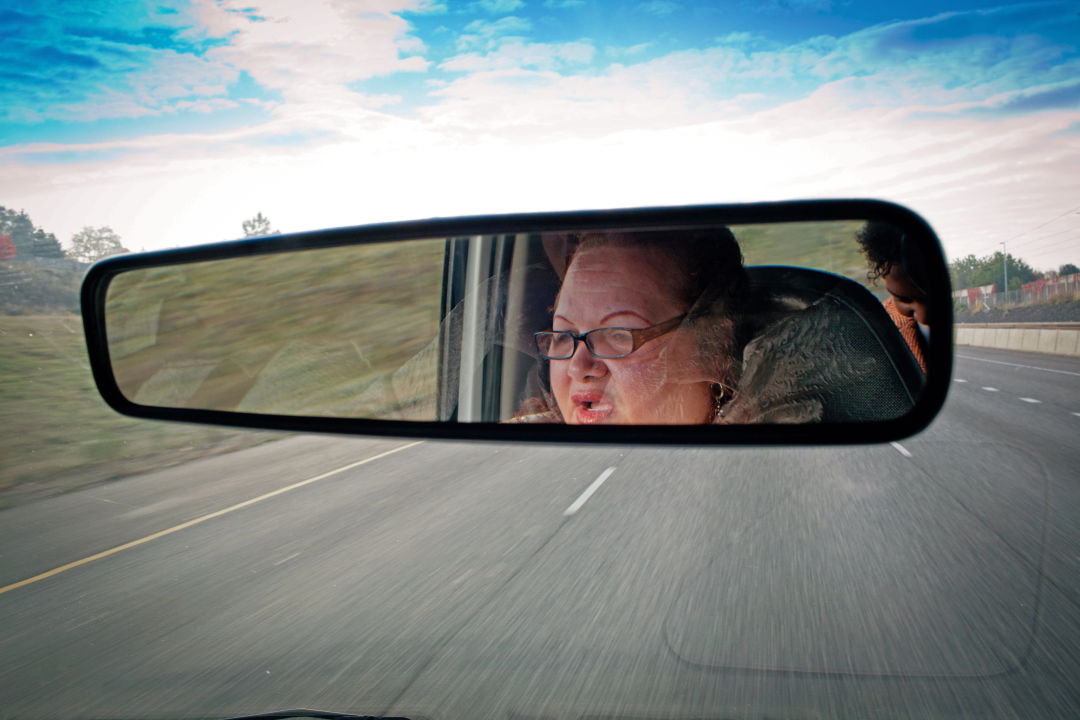
Every Sunday, Roberta Tyler drives across the metro area, from Vancouver to Clackamas, in the Highland Christian Center’s van to pick up people who can’t make it to church otherwise.
Image: Christopher Lamarca
AS THE FIRST NEW RESTAURANTS AND art galleries sprouted on NE Alberta Street during the mid-’90s, Highland Christian Center, too, was growing. Fast. Drawn by a new charismatic pastor, Wilbert G. Hardy, the congregation swelled from about 30 people in 1996 to some 250 by 1999. With the pews overflowing in their original space at NE Ninth Avenue and Dekum Street, they moved to an old movie theater on NE 18th Avenue with dreams of expanding with day care facilities, a gym, and reading rooms. Hardy’s ambition was to anchor the community all the way up to the Black United Front at NE 28th Avenue, resisting gentrification’s march up Alberta. So they approached a real estate agent about buying a coffee shop on the adjacent corner, says Hardy, “just trying to stake out a spot.”
Instead, their agent bought the building.
The congregation had labored hard to better the neighborhood, holding Saturday cleanups, working with the police to rout drug houses, and engaging the kids who were hanging out. But as more properties changed hands and newcomers arrived, nearly all white, new kinds of tension arose. Police calls about crack houses gradually were replaced by complaints about church services’ noise and the lack of Sunday parking.
“The new residents perceived all African Americans as a threat,” recalls Hardy. “They did not want to worship with what was perceived as an African American church. They did not want religion. It was a rude awakening to realize what was once your neighborhood, once very warm and inviting, had become hostile.” No longer feeling welcome, Highland decided to follow its congregation’s eastward exodus. In 2006, it bought a new $6 million center at NE Glisan Street and 76th Avenue, joining a number of churches that either closed or left inner North and Northeast.
City policies sparked the neighborhood’s regeneration. Mayors Clark and Katz earnestly reached out to include prominent African American business owners and activists to shape efforts like the 1993 Albina Community Plan. But as sidewalks were rebuilt; new street trees, lighting, and banners went up; and the Portland Development Commission handed out storefront improvement loans, few blacks participated.
The reinvestment, along with the booming economy and the cheap housing stock, unleashed a flood of buyers over the area. During the ’90s, prices more than quadrupled in some neighborhoods of Albina. The market burned so hot that homeowners received knocks on their door from buyers offering cash—or in the case of seniors like former State Senator Avel Gordly’s father, an offer at his hospital bed. Presented with cash figures many times what they paid in the ’40s and ’50s, owners, especially seniors or their surviving children, often sold, only to learn later they were severely underpaid and couldn’t afford to rebuy in the neighborhood.
“There’s anger because these people have no integrity,” says Gordly, whose sister recently received a letter from a young, white couple beseeching her yet again to sell the family home. “This kind of thing is still happening, and it’s outrageous.”
The greatest displacement, though, was of black renters, expelled by skyrocketing prices and dwindling rental stock as new owners moved in. The number of residents receiving rental assistance in the two zip codes constituting most of Albina dropped 58 percent in the first decade of the 2000s, according to Home Forward, Portland’s housing authority. In cases such as the Rose City Village, entire affordable-housing complexes were evicted so owners could make a few improvements and raise rents by hundreds or turn them into condos.
In 2004, MAX arrived. To provide the required local match to federal dollars for construction, the city formed the Interstate Corridor Urban Renewal Area in 2000. Knowing demolition and displacement from previous “urban renewal” projects still stung the area, the PDC enlisted 54 community members to help draft the project’s plan. The adopted policies explicitly stated that any increased tax revenues from rising property values should primarily benefit existing residents and protect against gentrification and displacement. But in 2002, a recession hit. Tax activists won a court case limiting how PDC generated revenue. The agency suspended the plan’s 18 antidisplacement projects and small-business-assistance programs, proceeding only with reconstruction of the housing development Columbia Villa (now called New Columbia) and the one project that promised to speed displacement, the Interstate MAX.
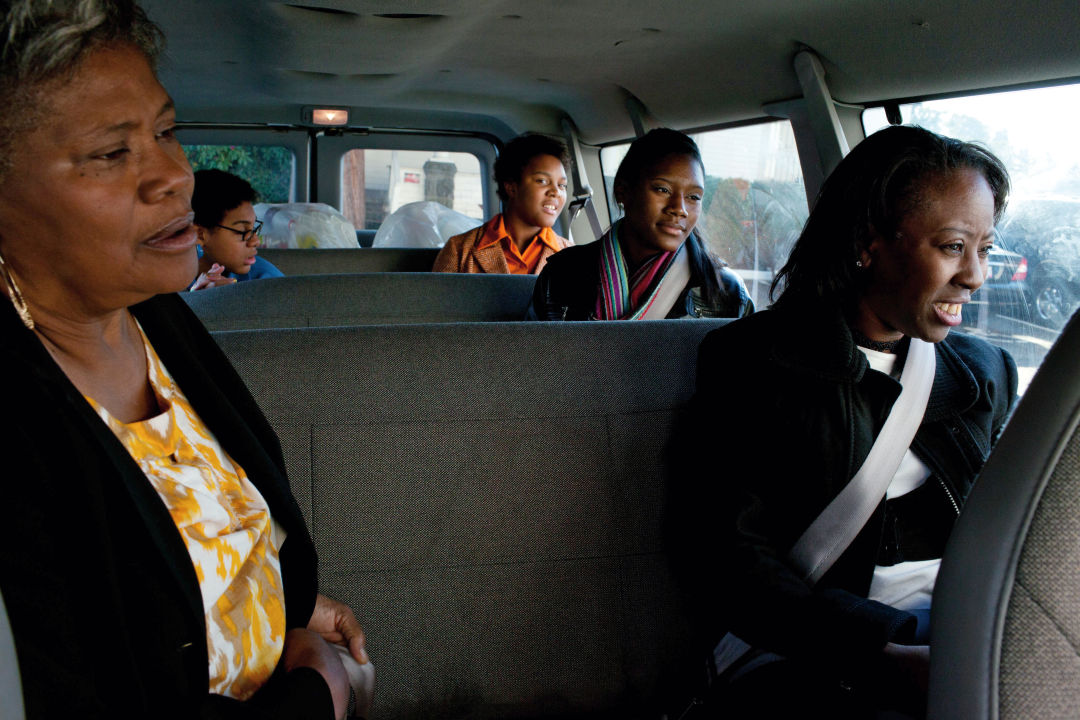
Image: Christopher Lamarca
“It left the rest of the district naked,” says Adams, then Mayor Vera Katz’s chief of staff. “If you put in light rail, without having enough control of property and programs in place and funded, gentrification will occur. And it did.”
More recently, the city adopted a new series of policies to slow displacement. In 2006, the city council added a requirement that 30 percent of funds generated by urban renewal areas be used for affordable housing. Last year, Adams led the creation of a new Office of Equity that has begun, for the first time, to formally measure the success of the city’s efforts to help its poor and racial minorities.
Many see progress. “One of the great things to me about the creation and even the thinking of the Office of Equity is that it’s normalizing a conversation about the disparities and the causes,” says Judith Mowry, coordinator of the Restorative Listening Project on Gentrification, who has strived to help new residents understand how their gain came at African Americans’ loss.
Critics see the talk of equity as merely politically trendy lip service. They say the Office of Equity’s plan lacks clear goals and the authority to enforce them, and that the PDC, despite its stated mission to benefit existing residents, doesn’t track its effectiveness in doing so. Instead, the agency remains focused on “affordable” developments, like Killingsworth Station, that aren’t actually affordable for the existing community. “We know how to make the speech,” says J. W. Matt Hennessee, pastor of Vancouver Avenue First Baptist Church and PDC chair from 2003 to 2005. “We know what our minds and hearts need to do, but the question is: have our actions and resources followed it? No, they haven’t.”
Through some seven decades of troubled city policies, Portland’s African American churches have been the most consistent voice of advocacy for the community, whether through individual churches like Vancouver Avenue, the 54-year-old Albina Ministerial Alliance, or the new anti-gang coalition the 1145 Club. It’s a role churches have played, really, since the days of slavery, notes Senior Pastor Donald Frazier of Genesis Community Fellowship. “The church is the only land that African Americans could ever express themselves freely on,” he says. “It’s the only thing they can claim is theirs, and not have anyone tell them what to do or take it from them.”
But if displacement continues at its current pace, the churches’ ability to help may be waning. “The reason that we are still at some semblance of togetherness is predicated on those of us who remember when we were a community,” observes Ed Washington, the only African American to be elected to the Metro Council, serving from 1991 to 2000. “I use the word bleak—not for everybody—but for a lot of people it’s going to be pretty dang bleak. There will be a percentage that survive, and do fine. But having people out in the Numbers, it’s a real challenge.”
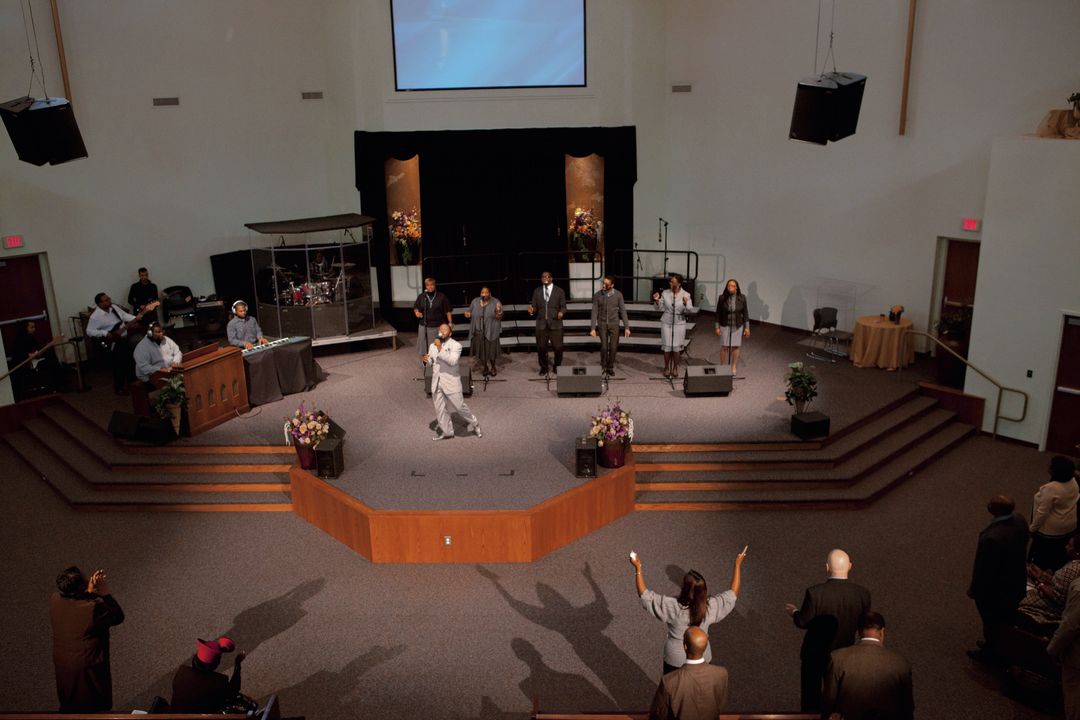
Emmanuel Church’s praise team choir and full band kick off its Sunday service with a swinging bluesy spell.
Image: Christopher Lamarca
INSIDE THE LARGE, MODERN CHAPEL of newly built and renamed Emmanuel Church near the intersection of N Alberta Street and I-5, everyone is singing. Not some solemn hymnal, but full-throated gospel. A five-piece band spins a swinging bluesy spell, a woman collapses in tears on the altar steps, and the others in the congregation, more than 150 people strong, holler and sing along.
The music slows as Bishop C. T. Wells, in a gray suit with cuff links, his shaved head reflecting the stage lighting, starts to speak from the edge of the altar. “I was driving out to East thinking, ‘What do we need to purge?’” he recounts, referring to a trip to Emmanuel’s small satellite church in Gresham. “I was looking at the pine trees, and a man was on a ladder chopping off the old growth—those things that worked but no longer work.” His voice begins to boom. “Hanging and brown, the old growth was obscuring the new.”
In 2009, Wells surveyed the congregation and discovered only 5 percent remained within walking distance of the church’s location—a distant cry from the majority that long lived close to the church his father founded, originally on N Mississippi Avenue, in 1965. The ever-lengthening commutes, he says, wear heavily on church participation, meaning that many people only come in for service and stop attending other events or activities like choir rehearsal. But where the smaller houses of worship often ferry their flocks back in, Emmanuel Church is stretching its services eastward to a satellite it opened in 2009, little more than a storefront sandwiched between the Lucky Spot lotto and deli and a Supercuts in a half-empty strip mall at SE 148th Avenue and Stark Street. The energy is much more subdued: no band, no choir, only two dozen congregants. Even with the satellite, the church has had a difficult time reaching the dispersed black population.
Emmanuel Church isn’t the only church to take major steps to adapt to its changing community. Mt Olivet Baptist Church, one of Portland’s oldest and biggest black churches, now in Portsmouth, also holds a service at Southridge High School in Beaverton that’s packed with Nike and tech professionals. Other churches like Victory Outreach followed Highland Christian Center’s lead and simply moved east. The smaller churches, meantime, have expanded their van transportation services, set up regional Bible studies in people’s homes, and tried to provide many services that used to come from other institutions, like legal and financial classes.
For many of the remaining congregants, the church is their central, if not only, connection to the black community. “It’s the only thing that keeps me being able to endure that I’ve lost my car, I’ve lost my home, I’ve pretty much lost everything,” explains Highland van driver Roberta Tyler, who now lives in a ministry-run home in Vancouver and says weekly trips to Highland are her only interaction with the community she grew up in since the Vanport flood. “It’s my foundation.”
But for some churches, it’s a shaky foundation at best. “The churches are holding on to the edge of the cliff by their fingertips,” says Darrell Millner, a historian in PSU’s Black Studies Department, “better than any other black institution, but I think that’s only a reflection of how strong they used to be.”
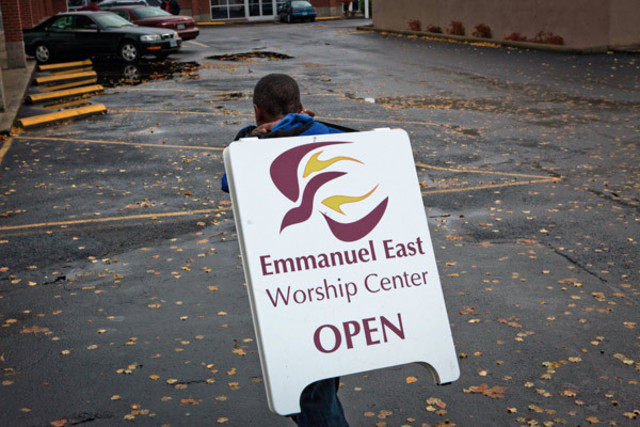
Emmanuel Church started a satellite location in a Gresham strip mall to reach its dispersed population.
Image: Christopher Lamarca
This is not the first time Albina has witnessed a major shift in demographics. Before African Americans were funneled into the area by discriminatory real estate practices after World War II, it housed mostly northern Europeans. Many of the churches that are now predominantly African American were white Lutheran or Methodist then. Some have already converted back to predominantly white establishments, though hardly new churches. Emmanuel Church’s original storefront was most recently a bike shop, Emmanuel Church of God in Christ United’s first building has become N Mississippi Avenue’s German-themed beer bar Prost, and the Highland Christian Center’s Alberta Street building was razed, rebuilt, and currently houses the coffee boutique Barista and an Umpqua Bank branch.
Districts of cities like Washington, DC, and San Francisco are going through similar cycles, from white to black to white again. Beyond the difference of scale, however, Portland also seems to differ in how we choose to remember our history. Or don’t, to be more accurate. Neighborhoods like U Street in DC or Harlem in New York are hip and desirable because of their multicultural environments and black history. Real estate agents originally sold Alberta as Portland’s multicultural neighborhood, but N Williams Avenue, once the swinging jazz and commerce heart of black Portland—Jumptown it was called—exhibits total amnesia to its history.
“I don’t think people who are seeking the vaunted Portlandia lifestyle are always consciously excluding people of color from their vision of ‘the good life,’” says PSU’s Lisa Bates, associate professor of urban studies and planning, “but that vision certainly does not explicitly include people of color or racial diversity as a key feature.”
Not so for the churches that have remained in Albina, many of them showing a generosity and openness to newcomers, even when it hasn’t been returned. The pastors firmly state that their churches should be viewed as multicultural, not black, churches. “I don’t look to see if it’s dominant black or white—those are things that have blinded us,” says Emmanuel Church of God in Christ United’s Bishop Pollard. “We’re a community of a lot of different people with a lot of different beliefs, and my job is to affect my community for the Kingdom of God.”
Top: The Emmanuel Church of God in Christ United, where congregants travel in from all over the city to worship (Image: Darryl James)


